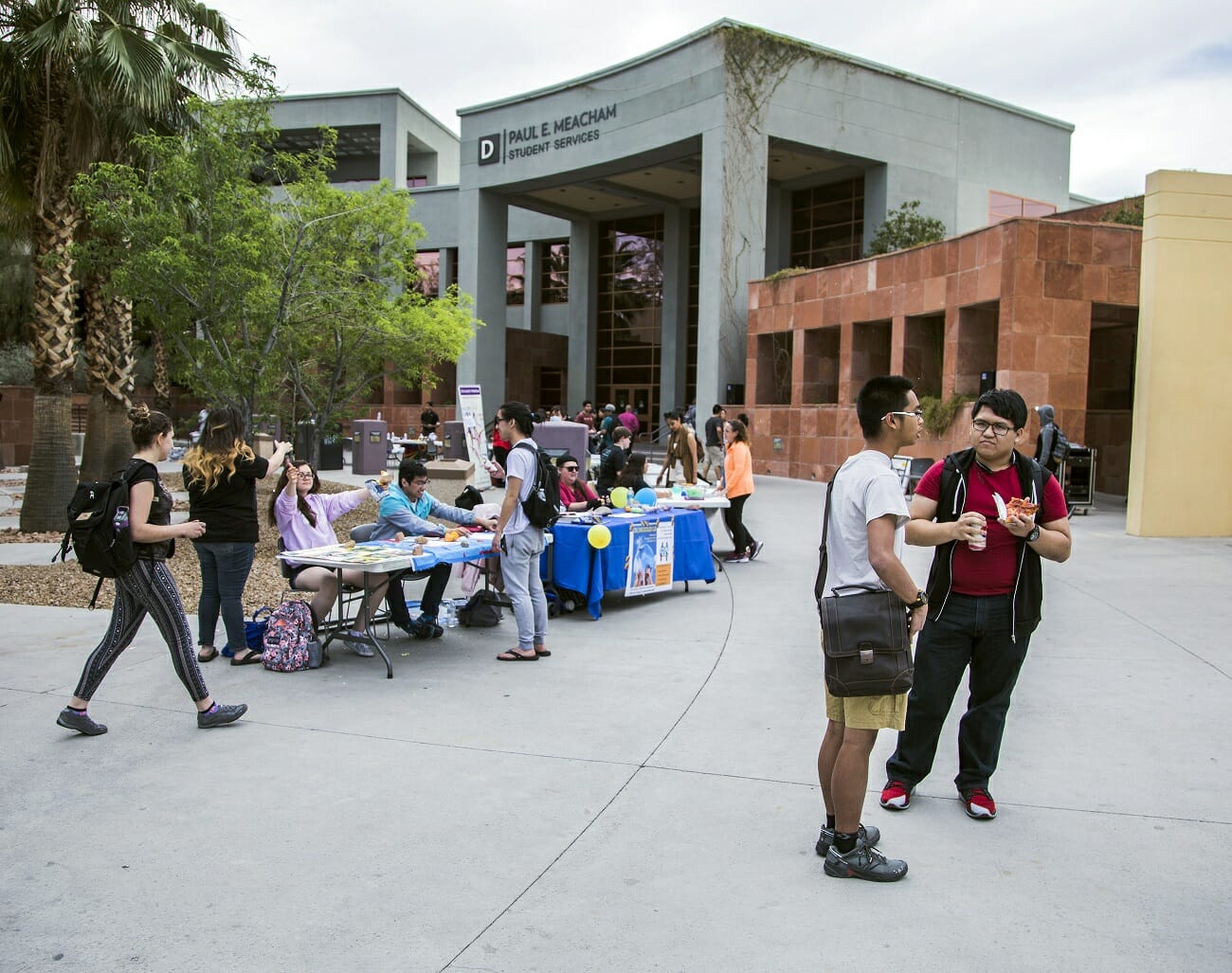State senator considers reducing community service requirement for scholarship that makes 2-year schools free

Democratic state Sen. Mo Denis says he may propose reducing the number of community service hours students must complete to receive the new Nevada Promise Scholarship — the state’s attempt to make community college free — after only about 10 percent of initial applicants met all the requirements to receive the award.
Denis is considering a number of legislative changes to the state-funded scholarship, which was created in 2017 through a bill he sponsored and is being awarded for the first time this school year. It applies only to community colleges, and as a “last-dollar” award, it offers students any remaining money they need to cover tuition after they’ve received other scholarships and grants.
“If this is all paid for, the students can focus on school and they can finish on time,” he said in Spanish during a recent interview on Cafecito con Luz y Michelle, a radio program produced by The Nevada Independent. “The scholarship isn’t just about giving money. It’s so students succeed and so that they finish college.”
A total of 12,198 students submitted an initial application to the scholarship — a number that Denis said was “phenomenal” and beyond expectations. That’s more than one-third of the total number of students who were enrolled as seniors in Nevada last school year.
But the number of students dropped off at different levels of the qualification process. Half of the original applicants didn’t complete the first training session the scholarship requires, and only one quarter of the original applicants completed both the training and the FAFSA (Free Application for Federal Student Aid) by the April 1 deadline.
A total of 1,318 students completed all the required 20 hours of community service, plus a meeting with a mentor and a second training session. The final pool of eligible applicants was just shy of 11 percent of the original pool.
It’s not yet clear how many of the eligible students enrolled in community college and will be tapping into the scholarship, or how much of the $3.5 million that lawmakers allocated for the program will be used this cycle.
The community service requirement might be reduced to eight hours — in line with what Nevada’s model for the program, Tennessee, is doing. Denis said there were a glut of students looking for qualifying community service opportunities at the same time, which could make it difficult for all students to hit the requirement.
“When you have so many students that are trying to look for service, where can they go to do it?” he said. “Fixing this is important.”
But he praised the idea of having recipients do community service hours. Applicants through the Nevada Promise Scholarship logged about 25,000 community service hours statewide in the program’s first year.
“They’re helping others, but at the same time, they’re helping themselves because they’re seeing the needs,” Denis said. “They can see what’s happening in our community. Sometimes when we go to school, we’re so focused on studying that we don’t see what’s happening.”
Another potential fix for legislators in the 2019 session is to allow for administrative funds. Nevada’s four community colleges have had to use their own money and staff resources to administer the program.
Nevada’s program differs somewhat from its model, Tennessee Promise. That began as an effort by a nonprofit group that raised money from businesses and later got the state involved and is also funded by a lottery, which Nevada doesn’t have.
Tennessee’s program is also administered by a nonprofit, in contrast with Nevada’s program, where each school must pay staff to administer the program at their institution.
But Nevada hopes to see some of the same results Tennessee has had. In large part because the FAFSA is part of the Promise application, Tennessee has a FAFSA completion rate of 79 percent, while Nevada’s completion rate is 53 percent — meaning students in the state are leaving millions of dollars of financial aid on the table.
Tennessee’s post-secondary enrollment rate has also increased 10.1 percent since implementing Tennessee Promise.
Higher education leaders are already looking ahead to how the program can help Nevada raise its low post-secondary attainment rate and bolster its workforce. A United Way report from 2017 found that while 54 percent of jobs require post-secondary education, only 30 percent of Nevadans over the age of 25 have a post-secondary degree.
The program is now accepting applications for 2019, and the Board of Regents recently approved a $3 million request they’ll make to the Legislature to continue the program for another two years.
“Our goal is to make college accessible for Nevada students who could not see a pathway to higher education,” Nevada Board of Regents Chairman Kevin Page said in a statement. “The state’s economic success is dependent on increased participation in post-secondary education and closing the achievement gap among the underserved.”
Disclosure: Rindels volunteered during a Nevada Promise Scholarship student mentoring session in spring 2018.
